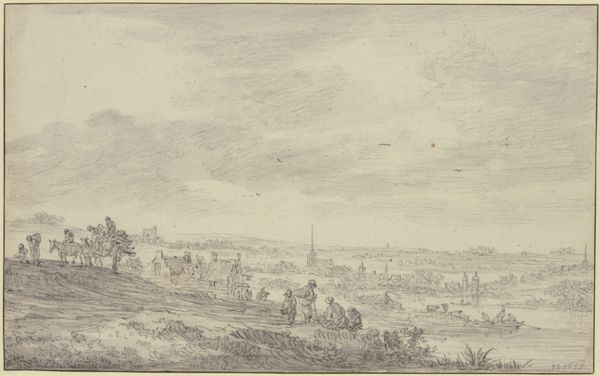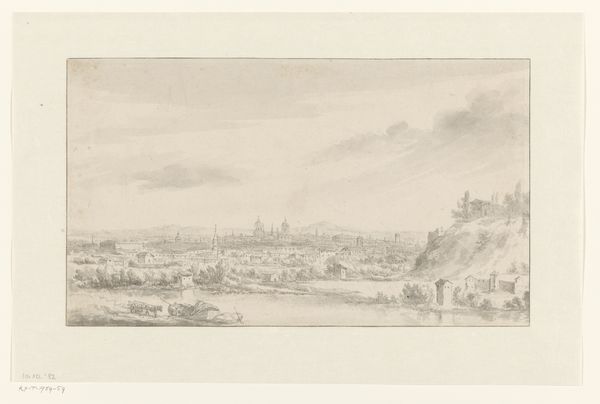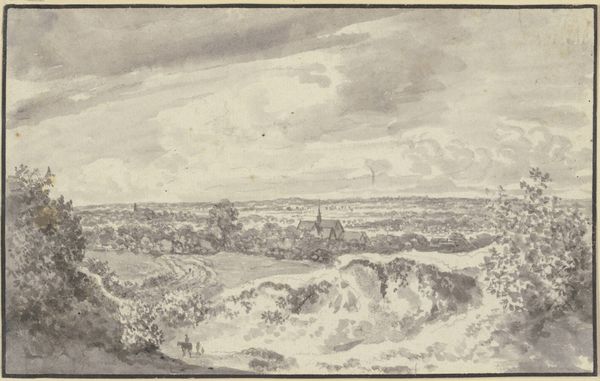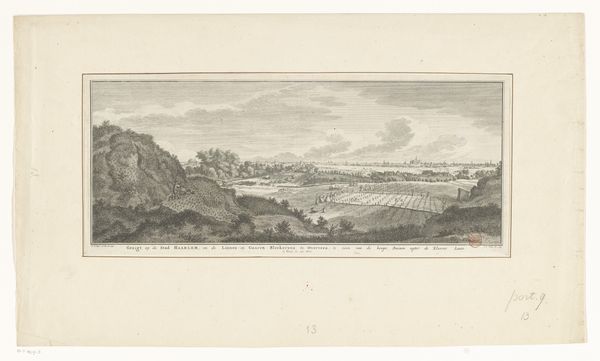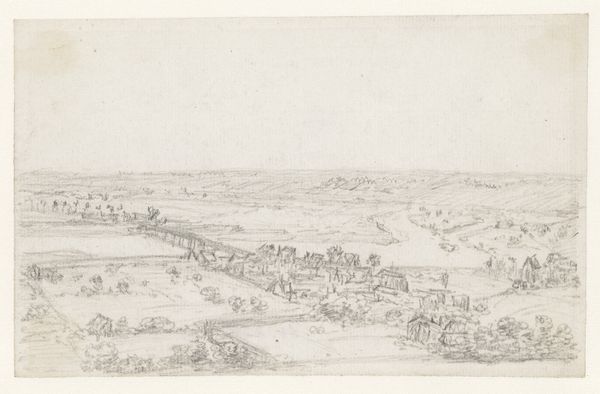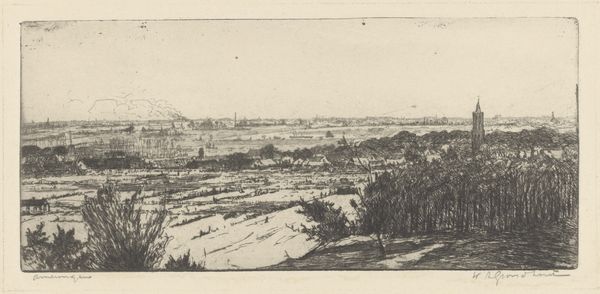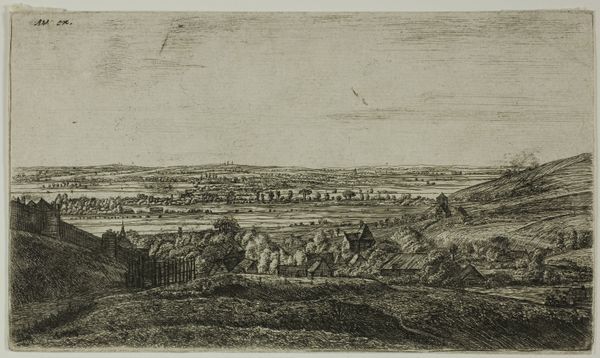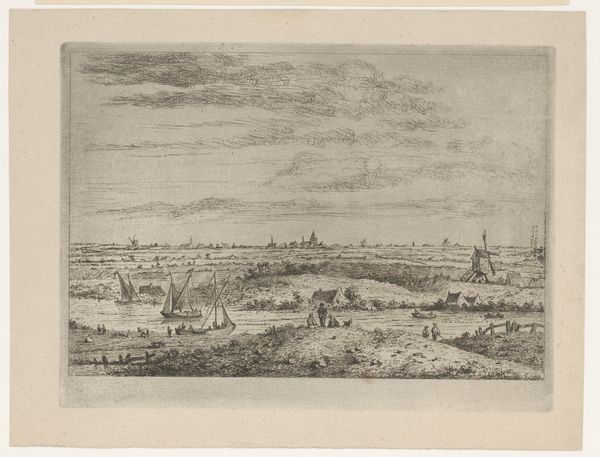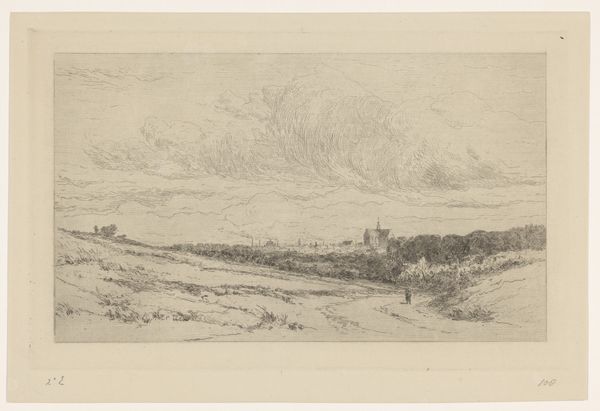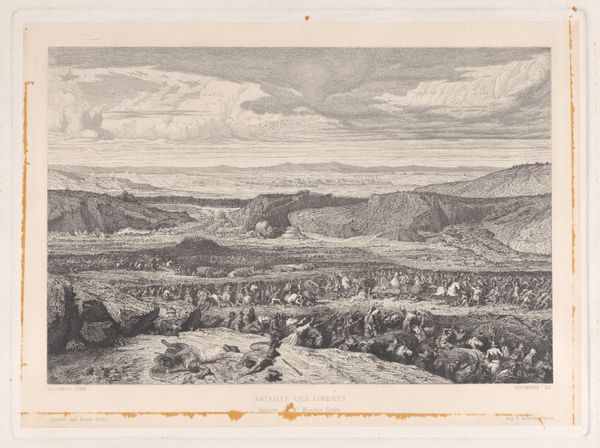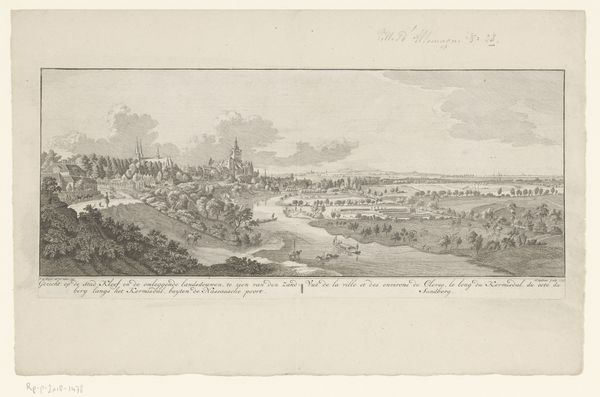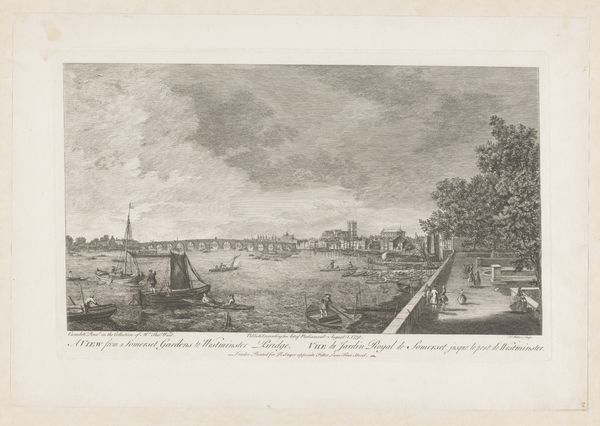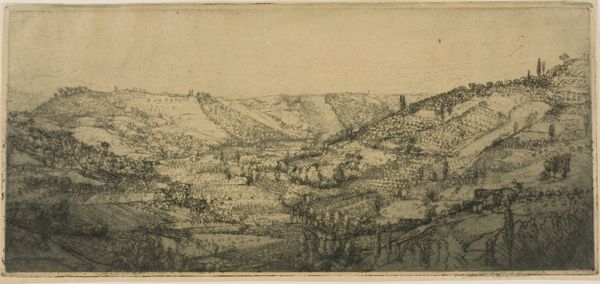
print, engraving
#
baroque
# print
#
old engraving style
#
landscape
#
river
#
cityscape
#
engraving
Dimensions: height 248 mm, width 280 mm
Copyright: Rijks Museum: Open Domain
Curator: Let’s turn our attention to "Rivierlandschap bij een beginnende storm," or "River Landscape at the Start of a Storm," an engraving by Antoine de Marcenay de Ghuy, created in 1758. Editor: It’s immediately striking how atmospheric it is. The whole scene feels weighty, ominous almost, even though it's rendered in such delicate lines. I’m interested in how it depicts labour. Is that a road with rut marks, created through continuous traffic, wearing down into the material earth itself? Curator: Yes, and it’s fascinating to consider the iconography of storms in art. They often represent upheaval, change, the power of nature against human structures. You can almost feel the shift in the wind through de Ghuy’s depiction. Even the clouds seem heavy with symbolic meaning, overshadowing the details of the city in the background. The sky suggests an elemental struggle ready to break free, contrasting sharply with the seeming peace in the lower register. Editor: The materiality also tells a story. This is an engraving. That means a skilled craftsman painstakingly etched lines into a metal plate, applying pressure and time. How long would that take to create such intricate lines of the natural scene above. Look how it repeats marks of the burin with such care across that sky, or building volume around that distant windmill! Consider the consumption of art at this time too— who could afford these detailed works on paper? Who did it represent? It tells of the artist, and also, its patrons. Curator: Absolutely, and consider how that act of repetitive creation mirrors nature itself, the cycle of storms and calm, the carving of rivers through landscapes over time. In many ways the image carries embedded temporal information from nature and labouring practices. Editor: So true. There’s a quiet strength, a working-class strength perhaps, evident in the sheer labour embedded into creating such beautiful pictures out of material processes. The human is inscribed within the mark. It feels incredibly appropriate to consider such processes in what ostensibly looks like "nature." Curator: Examining this work makes me appreciate the blend of human observation and skill required to both perceive and render such powerful natural phenomena and daily practice in this format. Editor: I agree, thinking about the materials transforms the emotional reading of the piece, it adds new significance to its layers of symbolism, connecting to its place of making and use.
Comments
No comments
Be the first to comment and join the conversation on the ultimate creative platform.
